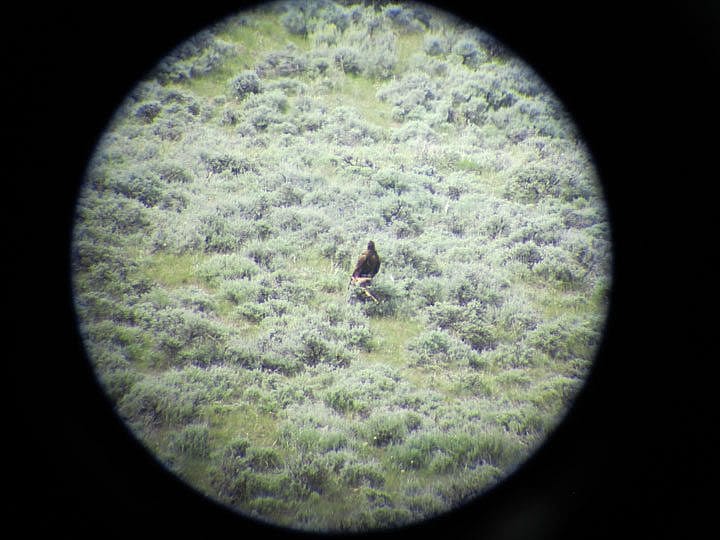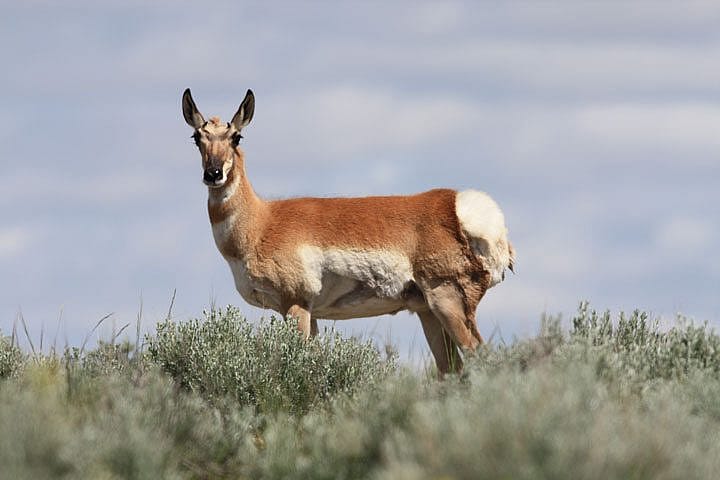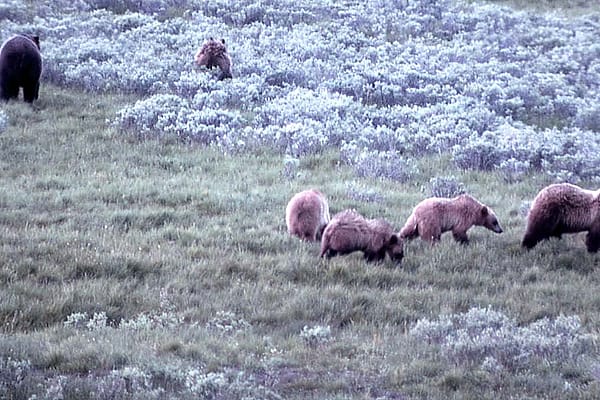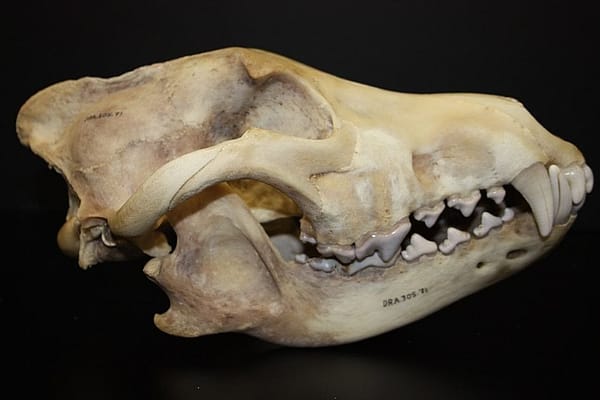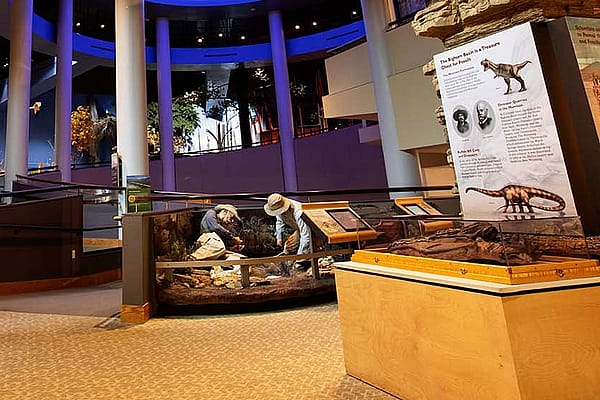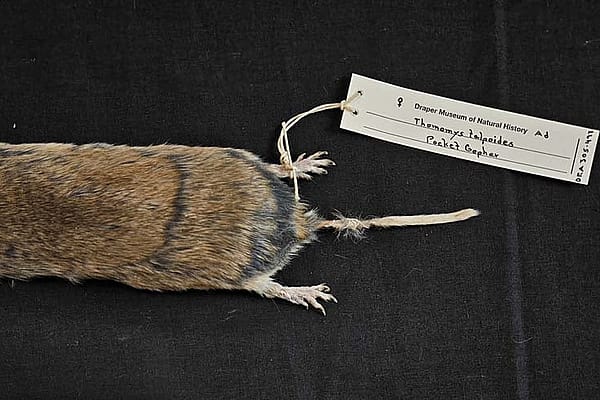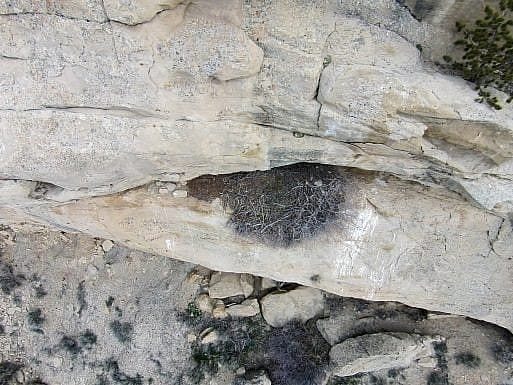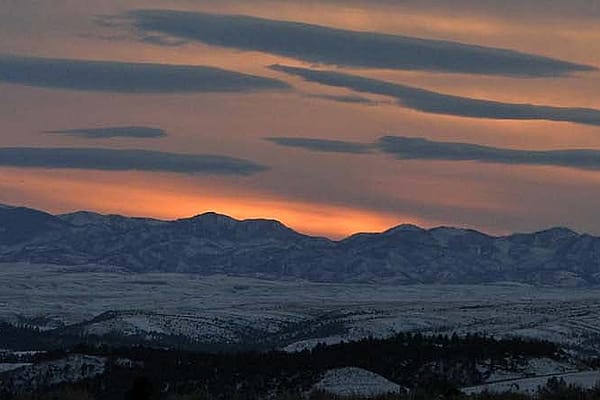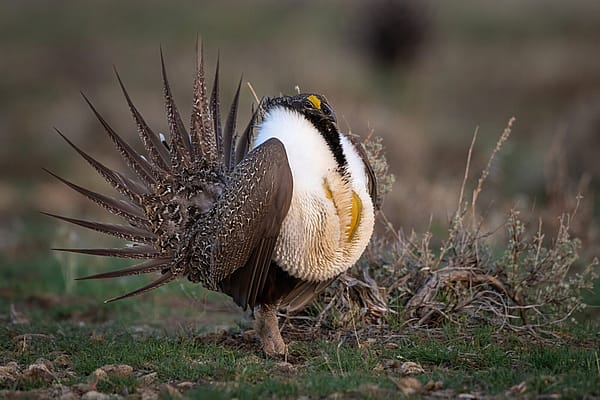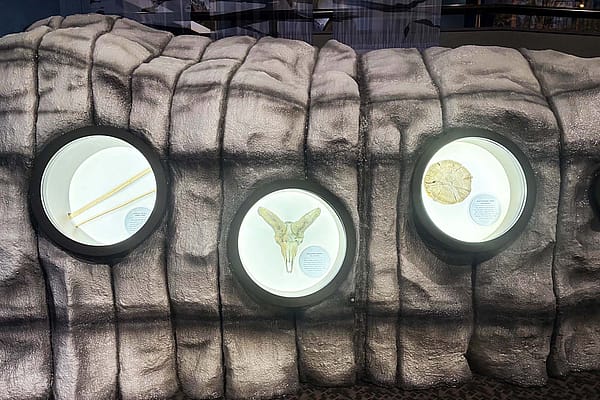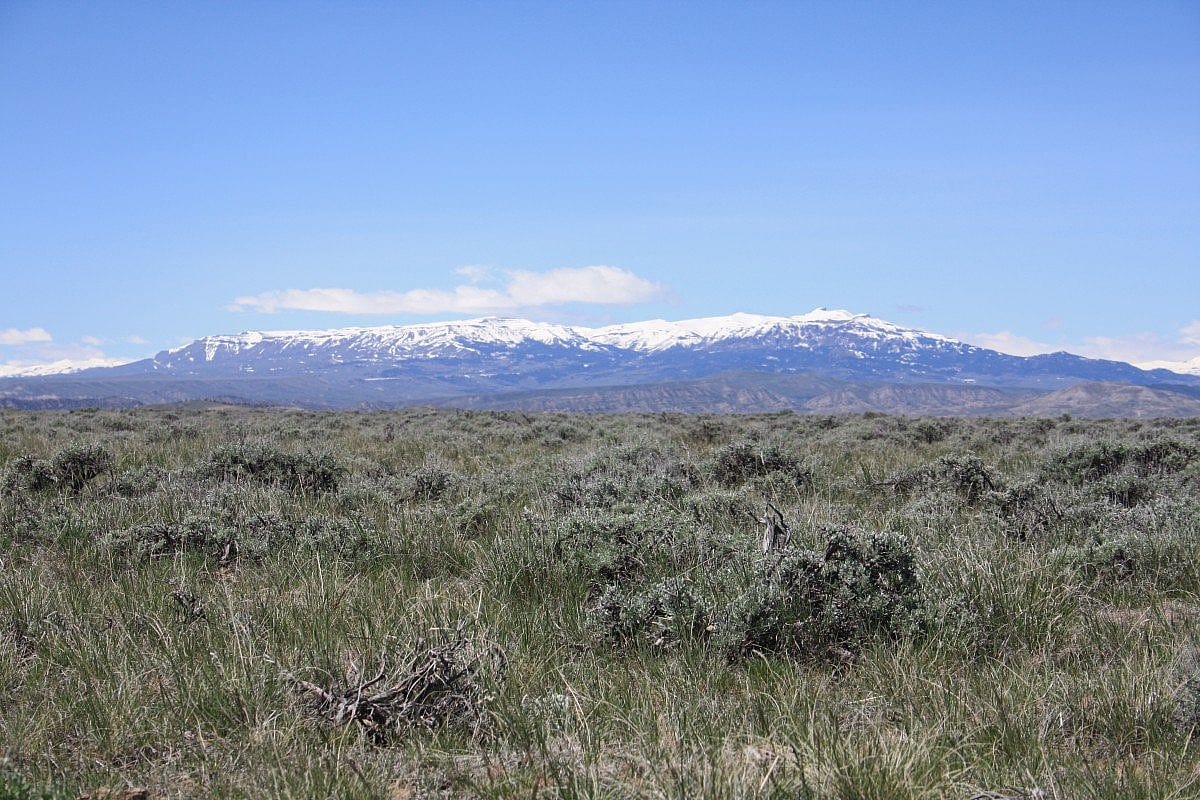
Golden Eagle Journal: June 22, 2011
22 June, 2011: It has been an exciting couple of weeks since last entry! The weather continued windy, cool, and rainy/snowy through last week, but has now become more like summer—with drying conditions and warmer temps. The sagebrush-steppe of the Bighorn Basin remains green. Our University of Wyoming, Berry Center for Biodiversity Conservation interns, Patrick Rodgers and Nathan Horton filed an insightful and particularly dramatic report and a photograph of an eagle grasping a pronghorn fawn last week:
“We arrived at the nest on a beautiful and calm morning to find the chick up and about with one of the adults in the nest. The chick still had a mostly white head and chest with wings and back that were an uneven mix of white down and dark feathers (with mostly white down), and a bright yellow cere; we estimated the chick to be 30 – 35 days old. On this day of observation we learned a very important lesson in pronghorn parenting: never try to conceal your fawn in sagebrush 300 yards from an active golden eagle nest. At 10:15 we observed one of the adult eagles leave the chick in the nest and make a landing 300 yards in front of our vehicle. The landing was not a typical, smooth landing of a golden eagle; rather it was rough with wings spread wide for balance followed shortly by the use of the beak to tear and pull on the prey upon which it had landed.
Then, from the nearby draw came at full speed three pronghorn antelope which chased the eagle off of its kill. The eagle came and landed 50 yards from our vehicle atop a telephone pole where it sat a few minutes before slicing and flying off for another attempt to enjoy its recently killed meal. We observed the whole ordeal play out as the two eagles would come to the kill and feed, and the pronghorn would return (an estimated 5 – 8 times) with relentless persistence to try and chase them away. We were both in awe at the fact that this could be a pronghorn kill and waited patiently for a view of the prey, when after about four hours one of the adult eagles drug a bloody and partially eaten pronghorn fawn on top of a large sagebrush. Both eagles fed on the fawn, but we watched one eagle feed till its crop bulged to a softball size projection on its chest, and guard the dead fawn for a little over two hours before we reluctantly left the spectacle before us.
It was amazing and inspiring to see the persistence of the pronghorn and the power of the golden eagle, and it was a special reminder of the importance of this keystone species in the invaluable sagebrush steppe of Wyoming.”
It’s a fact of nature that some individuals die so that other individuals live. In this case, the parent eagles in Nest 7 took the life of a newborn pronghorn fawn to support their own family. We’ll be completing our mid-season rabbit surveys this week and should have a better sense about whether the main eagle prey in our study area has remained stable or declined since last year. C.R. Preston
Written By
Charles Preston
Dr. Charles Preston served as Senior Curator at the Center of the West and Founding Curator-in Charge of its Draper Natural History Museum and Greater Yellowstone Raptor Experience. He is now Senior Scientist and Curator Emeritus of the Draper Museum.

